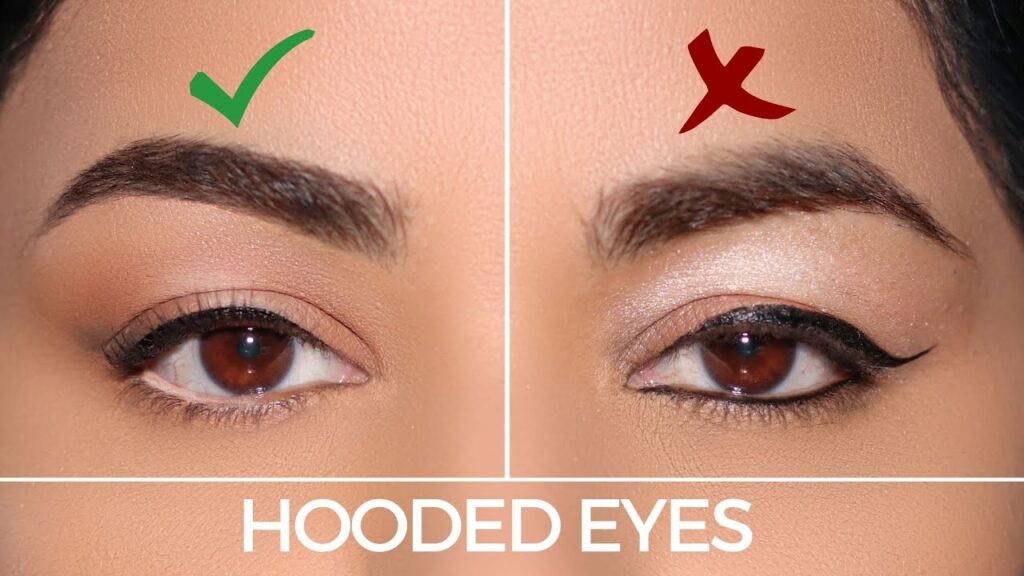Understanding Hooded Eyes: Characteristics, Causes, and Solutions
Hooded eyes are a common facial feature characterized by a fold of skin that hangs over the crease of the eyelid, partially covering the eye. This condition can affect individuals of all ages and ethnicities, but it is particularly prevalent among certain demographics. While hooded eyes are often considered a natural variation of eye shape, they can also be a source of concern for some individuals, leading to questions about aesthetics, functionality, and potential treatments.This comprehensive article will explore what hooded eyes are, their characteristics, causes, and various solutions available for those who wish to address them. We will also include a FAQ section to answer common questions related to hooded eyes.
What Are Hooded Eyes?
Hooded eyes, also known as hooded eyelids, occur when excess skin folds down from the brow bone, covering the upper eyelid and obscuring the crease. This can create an appearance of smaller eyes and may give the impression of fatigue or aging.
Characteristics of Hooded Eyes
- Reduced Eyelid Visibility: The most defining characteristic of hooded eyes is the limited visibility of the upper eyelid. The fold of skin often covers the crease, making it difficult to see the eyelid itself.
- Deep Crease: Individuals with hooded eyes typically have a deeper crease in the eyelid, which may not be visible when the eyes are open.
- Appearance: Hooded eyes can create a heavy-lidded look, which some people may perceive as tired or older.
- Asymmetry: It is possible to have one hooded eye and one non-hooded eye, leading to facial asymmetry.
Table: Key Characteristics of Hooded Eyes
| Characteristic | Description |
|---|---|
| Eyelid Visibility | Limited visibility of the upper eyelid due to excess skin |
| Eyelid Crease | Deep crease that may not be visible when eyes are open |
| Overall Appearance | Can appear heavy-lidded, giving an impression of tiredness or aging |
| Symmetry | May occur on one or both eyes, leading to facial asymmetry |
Causes of Hooded Eyes
Hooded eyes can arise from a variety of factors. Understanding these causes can help individuals determine whether their hooded eyes are a hereditary trait or a result of aging or lifestyle choices.
1. Genetics
Genetics play a significant role in determining eye shape and features. If one or both parents have hooded eyes, there is a higher likelihood that their children will inherit this trait. Hooded eyes can be a natural variation of eye shape that runs in families.
2. Aging
As individuals age, the skin loses elasticity and collagen, leading to sagging. This natural aging process can result in the development of hooded eyes, as the skin around the eyelids becomes looser and begins to droop.
3. Lifestyle Factors
Several lifestyle factors can contribute to the development of hooded eyes, including:
- Sun Exposure: Prolonged exposure to UV rays can damage the skin and accelerate the aging process, leading to sagging skin around the eyes.
- Smoking: Smoking can reduce blood flow to the skin, contributing to premature aging and the development of hooded eyes.
- Eye Rubbing: Frequent rubbing of the eyes can stretch the skin and contribute to sagging over time.
4. Medical Conditions
Certain medical conditions can also lead to the development of hooded eyes:
- Ptosis: This condition involves the drooping of the upper eyelid and can affect vision. It may occur due to muscle weakness or nerve damage.
- Dermatochalasis: This condition is characterized by excess skin on the eyelids, which can lead to hooded eyes. It often develops with age and can obstruct vision.
5. Ethnicity
Hooded eyes are more common in individuals of certain ethnic backgrounds, particularly those of East Asian descent. However, they can occur in people of all ethnicities.
How to Identify Hooded Eyes
Identifying whether you have hooded eyes is relatively straightforward. Here are some steps to help you determine if you have this eye shape:
- Look in the Mirror: Open your eyes comfortably and observe the upper eyelids. If most or all of the eyelid is covered by skin from the brow bone, you likely have hooded eyes.
- Check the Eyelash Line: If the skin below your brow touches or comes close to your lash line, this is another indicator of hooded eyes.
- Assess Eyelid Space: If you notice little to no visible eyelid space or crease when your eyes are open, it is a strong sign of hooded eyes.
Solutions for Hooded Eyes
While hooded eyes are a natural characteristic for many, some individuals may seek solutions for cosmetic or functional reasons. Here are some options to consider:
1. Makeup Techniques
Makeup can be a powerful tool to enhance and define hooded eyes. Here are some techniques to consider:
- Eyeshadow: Use matte eyeshadows in lighter shades to create the illusion of depth. Apply darker shades in the crease and blend well.
- Eyeliner: Use eyeliner to define the lash line. A thin line can help make the eyes appear larger, while a thicker line may emphasize the hooded appearance.
- Highlighting: Apply highlighter to the brow bone and inner corners of the eyes to draw attention and create a more lifted look.
2. Cosmetic Procedures
For those seeking more permanent solutions, several cosmetic procedures can help address hooded eyes:
- Blepharoplasty: This surgical procedure involves removing excess skin and fat from the eyelids, resulting in a more youthful appearance. It can also improve vision if hooded eyelids obstruct sight.
- Botox: Injecting Botox into the brow area can temporarily lift the eyebrows, reducing the appearance of hooded eyes.
- Fillers: Dermal fillers can be used to add volume to the area around the eyes, helping to create a more youthful and refreshed look.
3. Non-Surgical Options
For those who prefer non-invasive solutions, there are several options available:
- Eye Creams: Certain eye creams claim to tighten and lift the skin around the eyes. Look for products containing ingredients like retinol, hyaluronic acid, and peptides.
- Laser Treatments: Laser therapy can stimulate collagen production and tighten the skin, reducing the appearance of hooded eyes.
- Thread Lifts: This non-surgical procedure uses dissolvable threads to lift and tighten the skin around the eyes.
4. Lifestyle Changes
Making certain lifestyle changes can help minimize the appearance of hooded eyes:
- Sun Protection: Always wear sunscreen around the eyes to protect against UV damage.
- Hydration: Staying hydrated can improve skin elasticity and overall appearance.
- Healthy Diet: A balanced diet rich in vitamins and antioxidants can promote healthy skin.
FAQs About Hooded Eyes
What are hooded eyes?
Hooded eyes refer to a condition where excess skin folds down from the brow bone, covering the upper eyelid and obscuring the crease. This can create an appearance of smaller eyes and may give a tired or aged look.
Are hooded eyes hereditary?
Yes, hooded eyes can be hereditary. If one or both parents have hooded eyes, there is a higher likelihood that their children will inherit this trait.
Can hooded eyes affect vision?
In some cases, hooded eyes can obstruct vision, especially if the excess skin droops significantly. This may require medical intervention, such as blepharoplasty, to correct.
What are some makeup tips for hooded eyes?
To enhance hooded eyes, use lighter matte eyeshadows to create depth, define the lash line with eyeliner, and apply highlighter to the brow bone and inner corners of the eyes.
What are the treatment options for hooded eyes?
Treatment options for hooded eyes include makeup techniques, cosmetic procedures (such as blepharoplasty and Botox), non-surgical options (such as eye creams and laser treatments), and lifestyle changes.
Where can I find more information about hooded eyes?
For more detailed information on hooded eyes, you can visit the Wikipedia page on Eyelid Surgery.
Conclusion
Hooded eyes are a common and natural characteristic that can affect individuals of all ages and backgrounds. While they can sometimes be a source of concern for cosmetic or functional reasons, there are various solutions available, ranging from makeup techniques to surgical options. Understanding the causes, characteristics, and potential treatments for hooded eyes can empower individuals to embrace their unique features or seek the changes they desire. Whether through enhancing their appearance with makeup or considering cosmetic procedures, individuals can navigate their options confidently.



